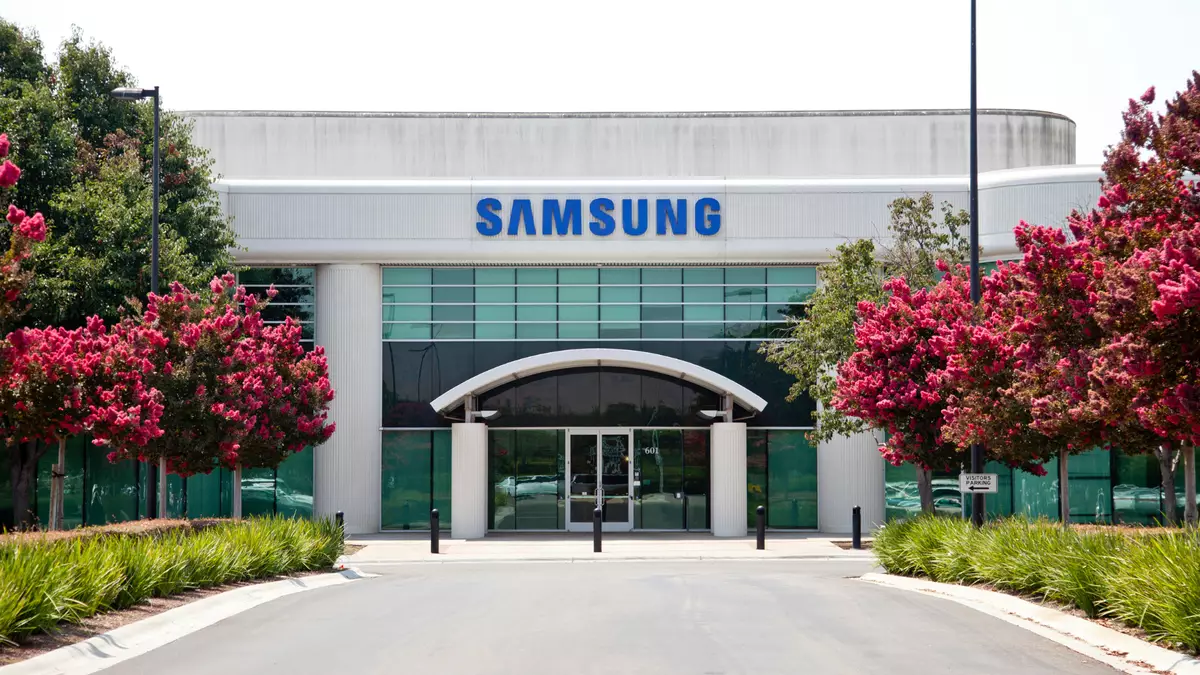The world of technology and manufacturing is never static, especially under the pressure of evolving trade policies. As the United States enacts steep tariffs on imports, many companies are grappling with potential price hikes and a shifting market landscape. Ironically, amidst this uncertainty, Samsung has managed to carve out a small victory that highlights both the chaos of the current economic climate and the strategic maneuvers of companies looking to adapt. Recent reports indicated that Samsung experienced a notable uptick in its operating profit for the first quarter of the year, earning an estimated 6.6 trillion won (approximately $4.47 billion). This figure, which surpasses prior expectations, underscores an unexpected demand surge.
While the overall profit might be slightly lower than the same timeframe last year, it’s significantly higher than the previous quarter. Analysts pinpoint the cause: consumers and manufacturers alike are rushing to secure inventory, motivated by fears that tariffs will lead to price increases. This reaction isn’t just a temporary spike; rather, it signals a larger trend where companies might shift their inventory management strategies to buffer against possible economic shocks.
Shifting Inventory Strategies and the Impact on Production
In the face of uncertainty, supply chain strategies are undergoing a transformation. Traditionally, many manufacturers have relied on a Just-in-Time (JIT) inventory model, allowing them to reduce waste and minimize storage costs. However, the looming threat of tariffs has prompted a notable shift toward stocking up on critical components, particularly memory chips from Samsung. According to Greg Roh, head of research at Hyundai Motor Securities, inventory hoarding is a strategic response to the volatile trade climate. This behavior not only disrupts traditional manufacturing practices but also puts pressure on suppliers like Samsung to ramp up production, which could lead to longer-term implications for pricing and availability.
As firms adjust their approach to inventory, it raises questions about the environment in which they operate. In times of turbulence, those companies that can pivot efficiently are more likely to thrive. The fear of escalating tariffs isn’t limited to just memory chips; it casts a wide net across various tech sectors, from gaming consoles like the Nintendo Switch to personal computing devices.
The Broader Economic Landscape and Expectation of Decline
Yet, while the immediate effects are beneficial for Samsung, experts caution against optimism. According to reports, analysts predict that shipments could decline in the second quarter due to market saturation and consumer fatigue. Uncertainty in tariffs also risks stifling future innovations and production plans. U.S. President Donald Trump has signaled intentions to increase tariffs drastically, particularly against countries like China, Vietnam, and Taiwan. Such decisions not only threaten to inflate prices but also provoke retaliatory measures that can spiral into trade wars, detrimental to global commerce.
For companies like Samsung, which has a substantial manufacturing presence across Southeast Asia, the repercussions could reverberate throughout their business model. Tariff-induced inflation could force manufacturers to reconsider pricing strategies, which might lead to a contraction in demand as consumers react to increased costs. This looming crisis calls for a keen awareness of market dynamics, as consumer behaviors can shift rapidly under financial pressure.
Consumer Behavior: The Art of Preemptive Buying
As the specter of higher prices looms, consumers are not the only ones feeling the impact. Trend-setters in the tech space, like Samsung, are keenly aware of how price sensitivity influences consumer behavior. The preemptive sales of the Galaxy S25 reflect an acute understanding of this reality. By offering products ahead of potential price increases, Samsung has managed to create a sense of urgency among shoppers—an effective marketing approach that capitalizes on fear and uncertainty. Similar strategies from firms like Nintendo, which has paused preorders for its Switch 2 due to cost reevaluations, demonstrate widespread acknowledgment that the economic landscape is shifting beneath consumers’ feet.
These preemptive measures highlight an interesting transition in the marketplace; savvy producers are not just reacting to tariffs but are harnessing them to guide consumer psychology, creating strategic advantages among competitors. As industries brace for impact, companies that understand discerning consumer behavior coupled with economic forecasts stand to not just survive, but to thrive amidst chaos.
The Inevitable Upsurge of Pricing and Consumer Response
It transpires that Samsung’s quarterly success, while commendable, is a byproduct of external pressures rather than a sustainable growth model. The inflationary pressures from tariffs are a double-edged sword: they create opportunities for immediate gains but risk long-term repercussions for market stability. As technology companies determine how to navigate this evolving landscape, they must also heed the consumer’s reaction to pricing strategies and inventory management. Tariffs may spark initial interest and sales, but any price hikes ultimately risk alienating loyal customers, a far greater danger lurking in the shadows of this economic storm.


Leave a Reply